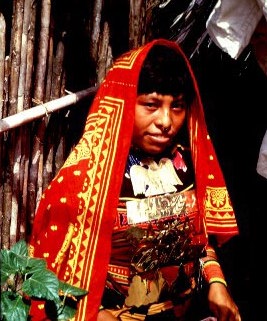
A Brief Introduction to Traditional Agriculture and Disease Management Practices
Ancient farmers developed sustainable agriculture practices which allowed them to produce food and fiber for thousands of years with few if any outside inputs. Many of these practices have been forgotten or abandoned in developed countries, but are still used by many traditional, subsistence, or partially subsistence farmers in developing countries. Most traditional methods of agriculture were developed empirically through millennia of trial and error, natural selection, and keen observation. Some of these practices, which often conserve energy, maintain natural resources, and reduce chemical use, are worthy of examination. Pesticides are generally used only in small amounts by traditional farmers, primarily because of their cost. Today, perhaps over half of the worlds' arable land is farmed by traditional farmers. Many of their techniques are unknown or poorly understood, but have allowed them to produce crops and animals with minimal or no purchased inputs. Traditional farming systems often resemble natural tropical agroecosystems. This, and their striking diversity gives them a high degree of stability, resilience, and efficiency.

The use of disease resistant varieties emphasizes the value of traditional cultivars (landraces) selected over millennia. Landraces are usually genetically diverse and are adapted to their environment and endemic pathogens. Although they not necessarily high yielding, they generally are dependable and are stable in yielding some harvest under all but the poorest of conditions.
Most practices for disease management used by traditional farmers are cultural practices. Some practices of traditional farmers include the following: altering of plant and crop architecture, biological control, burning, adjusting crop density, depth or time of planting, planting diverse crops, fallowing, flooding, mulching, multiple cropping, planting without tillage, using organic amendments, planting in raised beds, rotation, sanitation, manipulating shade, and tillage.
Kuna Indian woman in traditional dress.. The Kuna Indians of Panama inhabit more than 365 islands and a strip of land on the Atlantic coast of Panama. They originally fled to Panama's Caribbean coast 500 years ago to escape Spanish conquistadors. Believed to be descendents of the Caribs, the Kuna Indians still live in much the same manner as their ancestors. There are some 40,000 Kuna indians by Panamanian census estimates. They live on about 40 major populated islands. These islands are close to the coast; the distance from shore to shore is never more than one kilometer. In addition to hunting and fishing the Kuna practice slash and burn agriculture on the mainland to produce food.
Most, but not all, of these practices are sustainable in the long term. It should be noted that a few of the above practices require high organic inputs, and that some practices have high labor requirements. Some practices have multiple benefits. For example, the use of mulches prevents erosion, improves soil quality, manages weeds, lowers soil temperatures, conserves moisture, and may aid in the management of soil-borne diseases. Mulches also reduce rain splashing, an important means of dissemination for numerous bacterial and fungal pathogens. Thus, the use of mulches is increasingly recommended in agricultural development efforts.
Campesinos.jpg Ecuadorian campesinos near Quimiag (traditional farmers). An example of the target audience of work on international development. (Picture courtesy of Rodger Kirkby)
The Cornell University course Traditional Agriculture in Developing Countries examines traditional systems from several disciplinary points of view.
|Introduction to Traditional Agriculture |
|Further Resources on Traditional Agriculture |
|Related Cornell University Courses|
|List of Personal Publications|Overview of Traditional Agricultural methods |